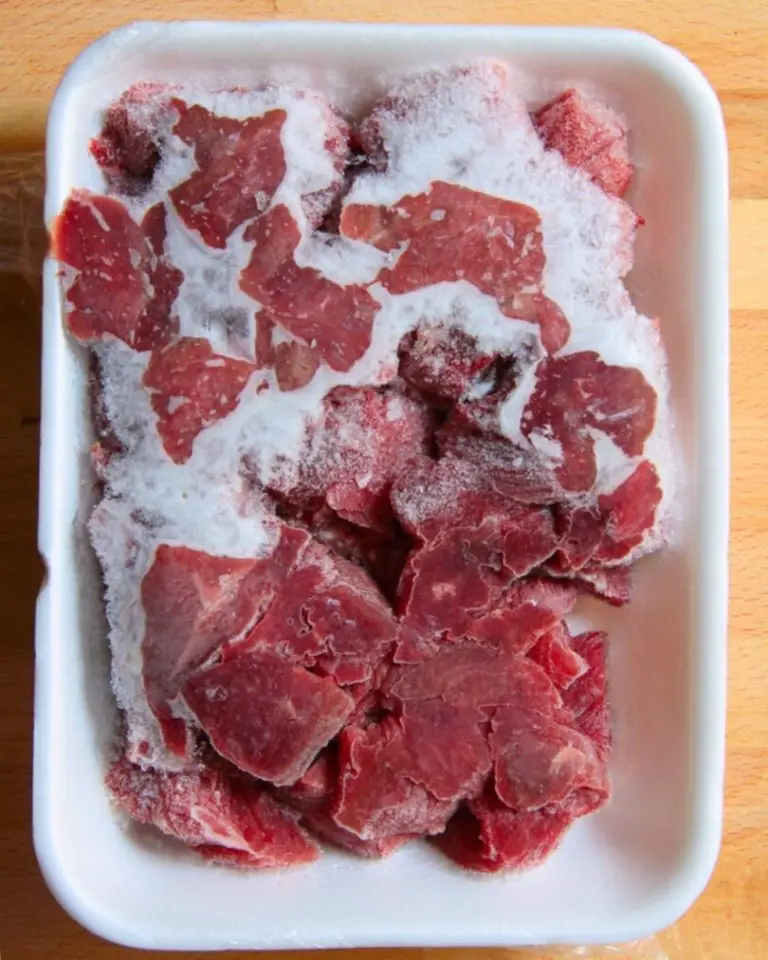Defrosting meat properly is crucial for both food safety and maintaining the quality of your meals. Improper thawing can lead to bacterial growth, resulting in foodborne illnesses. In this comprehensive guide, we’ll explore the safest and most effective methods for defrosting meat, ensuring your dishes are both delicious and safe to consume.
1. Refrigerator Thawing: The Gold Standard
Why It’s Safe:
Thawing meat in the refrigerator keeps it at a consistent, safe temperature below 40°F (4°C), preventing the growth of harmful bacteria.wandafarms.com+8Epicurious+8Seasoned Advice+8
How to Do It:
- Place the meat, still in its packaging, on a plate or tray to catch any drips.
- Position it on the bottom shelf of the refrigerator to avoid cross-contamination with other foods.blog.foodsafety.com.au+2Canada+2foodnetwork.com+2
Time Required:
- Small cuts (e.g., chicken breasts, steaks): 24 hours.
- Larger cuts (e.g., roasts, whole poultry): 24 hours for every 5 pounds (2.27 kg).fsis.usda.gov
Additional Tips:
- Once thawed, ground meat, poultry, and seafood can remain safe in the refrigerator for an additional 1–2 days. Red meats like beef, pork, and lamb can last 3–5 days.
- Thawed meat can be refrozen without cooking, though there may be some loss of quality.Seasoned Advice+3Good Housekeeping+3fsis.usda.gov+3Good Housekeeping+2Seasoned Advice+2fsis.usda.gov+2
2. Cold Water Thawing: A Faster Alternative
Why It’s Effective:
This method is quicker than refrigerator thawing and still maintains a safe temperature to prevent bacterial growth.Southern Living+3fsis.usda.gov+3Clover Meadows Beef+3
How to Do It:
- Ensure the meat is in a leak-proof plastic bag to prevent water from damaging the meat tissue and to avoid bacterial contamination.
- Submerge the bagged meat in cold tap water.
- Change the water every 30 minutes to continue the thawing process.Seasoned Advice+2mhpgrills.com+2fsis.usda.gov+2Seasoned Advice+7healthygallatin.org+7fsis.usda.gov+7Epicurious+4fsis.usda.gov+4healthygallatin.org+4
Time Required:
- Small packages (about 1 pound or 0.45 kg): 1 hour or less.
- 3–4 pound packages: 2–3 hours.
- Whole turkeys: approximately 30 minutes per pound.Good Housekeeping+4foodnetwork.com+4fsis.usda.gov+4foodnetwork.com+4fsis.usda.gov+4Seasoned Advice+4
Important Note:
Once thawed, cook the meat immediately. Meat thawed using this method should not be refrozen unless it is cooked first.Seasoned Advice+3Good Housekeeping+3foodnetwork.com+3
3. Microwave Thawing: The Quick Fix
Why It’s Convenient:
Microwave thawing is the fastest method, ideal when you’re short on time.fsis.usda.gov+1EatingWell+1
How to Do It:
- Remove the meat from its packaging.
- Place it on a microwave-safe plate.
- Use the microwave’s defrost function, checking and turning the meat periodically.Seasoned Advice+5foodnetwork.com+5createandcook.netlify.app+5Epicurious
Important Considerations:
- Some areas of the meat may begin to cook during microwaving, leading to uneven thawing.
- Cook the meat immediately after thawing.
- Do not refreeze meat thawed in the microwave unless it is cooked first.fsis.usda.gov+1foodnetwork.com+1Epicurious+2foodnetwork.com+2fsis.usda.gov+2fsis.usda.gov+2Good Housekeeping+2foodnetwork.com+2
4. Cooking from Frozen: No Thawing Needed
Why It’s Possible:
You can cook meat directly from the freezer, though it requires adjustments in cooking time and method.
Guidelines:
- Cooking time will be approximately 50% longer than if the meat were thawed.
- Avoid cooking frozen meat in a slow cooker, as it may not reach a safe temperature quickly enough.
- Use a meat thermometer to ensure the meat reaches the safe minimum internal temperature.foodnetwork.com+1fsis.usda.gov+1Real Simple
Methods to Avoid
Room Temperature Thawing:
Never thaw meat on the counter or at room temperature. This allows the outer layer to reach temperatures where bacteria can multiply rapidly, even if the inside remains frozen.Canada+4foodnetwork.com+4Seasoned Advice+4fsis.usda.gov+4Seasoned Advice+4foodnetwork.com+4
Hot Water Thawing:
Thawing meat in hot water is unsafe. It can cause the outer layers to enter the “danger zone” (40°F–140°F or 4°C–60°C) where bacteria grow rapidly, while the inside remains frozen.foodnetwork.comWebstaurantStore+3Seasoned Advice+3Food & Wine+3
Defrosting Trays:
Some products claim to defrost meat quickly without heat. However, experts caution that these methods may not keep the meat at a safe temperature, increasing the risk of bacterial growth.
Final Thoughts
Properly defrosting meat is essential for food safety and quality. While the refrigerator method is the safest, the cold water and microwave methods are viable alternatives when time is limited. Always remember to cook meat immediately after thawing using the cold water or microwave methods, and never refreeze meat unless it has been cooked first.
By following these guidelines, you can ensure that your meals are both delicious and safe to enjoy.

